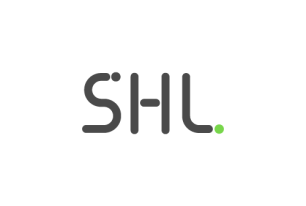The Role of Pace and Consistency in Employee Experience Strategy
Learn why a paced approach leads to better outcomes and how you can implement paced and consistent strategies to improve your employee experience.
Share
In a recent post, I shared some “realizations from the run” where I discussed what I learned from running with clubs about role of community as it relates to organizational culture. Here, I would like to share another insight from my passion for running: creating an employee experience that attracts and retains employees requires pace and consistency.
When I run during the week, I often run shorter distances and push my pace, which helps me gain speed over time. But on weekends, when I take my long runs, I take my time and ease into a steady rhythm that will carry me through the miles ahead. This method allows me to match my pace to my purpose: I train faster on shorter runs to gain speed and slower on longer runs to gain endurance. Much like this tried and true running strategy helps me meet goals over time, it is also the key to success in just about everything we do (consider Malcom Gladwell’s 10,000 hours rule in Outliers). Whether it be athletic training, weight loss, financial planning, or building a lasting, successful business, achieving a big, hairy, audacious goal requires the hard work of pace and consistency.
This concept that pace and consistent effort lead to success is far from new. Consider inspirational posts and idioms that remind us “if you want to go fast, go alone; if you want to go far, go together” or “slow and steady wins the race” or “life is a marathon, not a sprint”. However often we hear these phrases, though, it is difficult to imagine how this idea comes to life in practice, and even harder to picture implementing a paced strategy in today’s VUCA business environment.
As it relates to people strategy, organizations are operating in hyper-speed mode to focus on the well-being of their employees, take a stand on social justice issues, meet increasing demands for flexible work environments, up their analytics games, and deepen their bench of talent to fill critical leadership roles. And they are making heavy investments to make this happen. In 2019, Gartner reported that organizations spend an average of $2,420 per employee to enhance the employee experience. However, these efforts can be tricky to pull off. Their research also showed that only 13% of employees report being fully satisfied with their employee experience.
So, how can organizations defy the odds and invest in talent strategies that actually work? Just like Jim Collins suggests with the 20-mile march, Jacob Morgan describes in his book The Employee Experience Advantage, and Gartner describes in their HBR article Why Employee Experience Initiatives Fall Short, you have to play the long game.
Whether it be athletic training, weight loss, financial planning, or building a lasting, successful business, achieving a big, harry, audacious goal requires the hard work of pace and consistency.
Building an employee experience strategy.
First, in his book Great by Choice, Jim Collins describes this paced approach as the 20-mile march. Imagine you are about to set out to hike the Appalachian Trail. Using a 20-mile march approach, each day, no matter the weather, your mood, or what other people around you are doing, you march approximately 20 miles and then stop. Sometimes this means holding back when you could go farther, and sometimes this means pushing through under tough circumstances. But, as Collins’ research shows, people and companies who subscribe to this approach (Stryker, Southwest, Progressive Insurance) come out on top over and over when their competitors—many of whom may have had more impressive short-term gains—have ultimately struggled, and some even failed. This happens for three reasons:
- This paced approach builds your confidence to perform in adverse circumstances.
- The discipline required reduces the likelihood of failure when hit by disruptions.
- The pace and discipline help you maintain control in an out-of-control environment.
Second, as Morgan describes in his work, organizations that succeed in creating environments that attract and retain employees overtime focus on three key elements of the employee experience: cultural, technological, and physical.
- The cultural element involves taking small, consistent actions to improve your culture based on a continuous employee feedback loop.
- The technical element involves making sure employees have access to the technological tools that will make their jobs easier, not harder; and being transparent about how technology decisions are made.
- The physical element involves creating purpose-driven spaces, designed by taking employee needs into account and providing people with the location flexibility they need to do their best work.
Morgan finds that organizations who make small, continuous changes in these areas, informed by a continuous feedback loop outperform others by 1.5 times in employee growth and 4.2 times in average profit.
To invest in talent strategies that actually work, you have to play the long game.
Third, Gartner’s paced approach also recommends tackling the employee experience from three lenses:
- Calibrating expectations by being clear about what an organization can and cannot do, then seeking employee feedback to create a collective “experience vision”.
- Personalizing the day-to-day experience at scale by providing transparent employee experience data for individual employees to relate to, then equipping managers with options for how individual employees might opt into preferred experience or development opportunities. You can get these kinds of people insights from platforms such as Talent Central, our leading talent assessment portal which provide powerful people insights and improved business performance through talent assessment data on a single, powerful access point.
- Shaping memories like we do for our customers by using strategies like crowdsourcing approaches to highlight positive experiences, individual acknowledgment of contributions, and ownership of where the organization has underperformed in the past.
Gartner finds that organizations who take this shaping approach report a 32% increase in employees who report being largely satisfied with their employee experience, and at a 32% lower cost than their counterparts.
Companies who create impactful employee experiences use paced and consistent approaches. Paced strategies do not rely on short term incentives like parties, snacks, and swag; or change their strategy every year or two in accordance with the latest leadership transition and trend. Rather, they engage in the slow and difficult work of attacking the root of cultural issues and creating change little by little. Sure, these companies may still enjoy annual cook-offs and fleece zip-ups, but these things serve as add-ons to the less glamorous but more powerful work happening deep in the organization. So, as you reflect on your own talent strategy today, have you set the pace that will take you through the finish line?
If you are interested in learning more about building paced, sustainable cultures and other talent management insights like this, check out my LinkedIn page and SHL’s blog to hear from other industry thought leaders.









